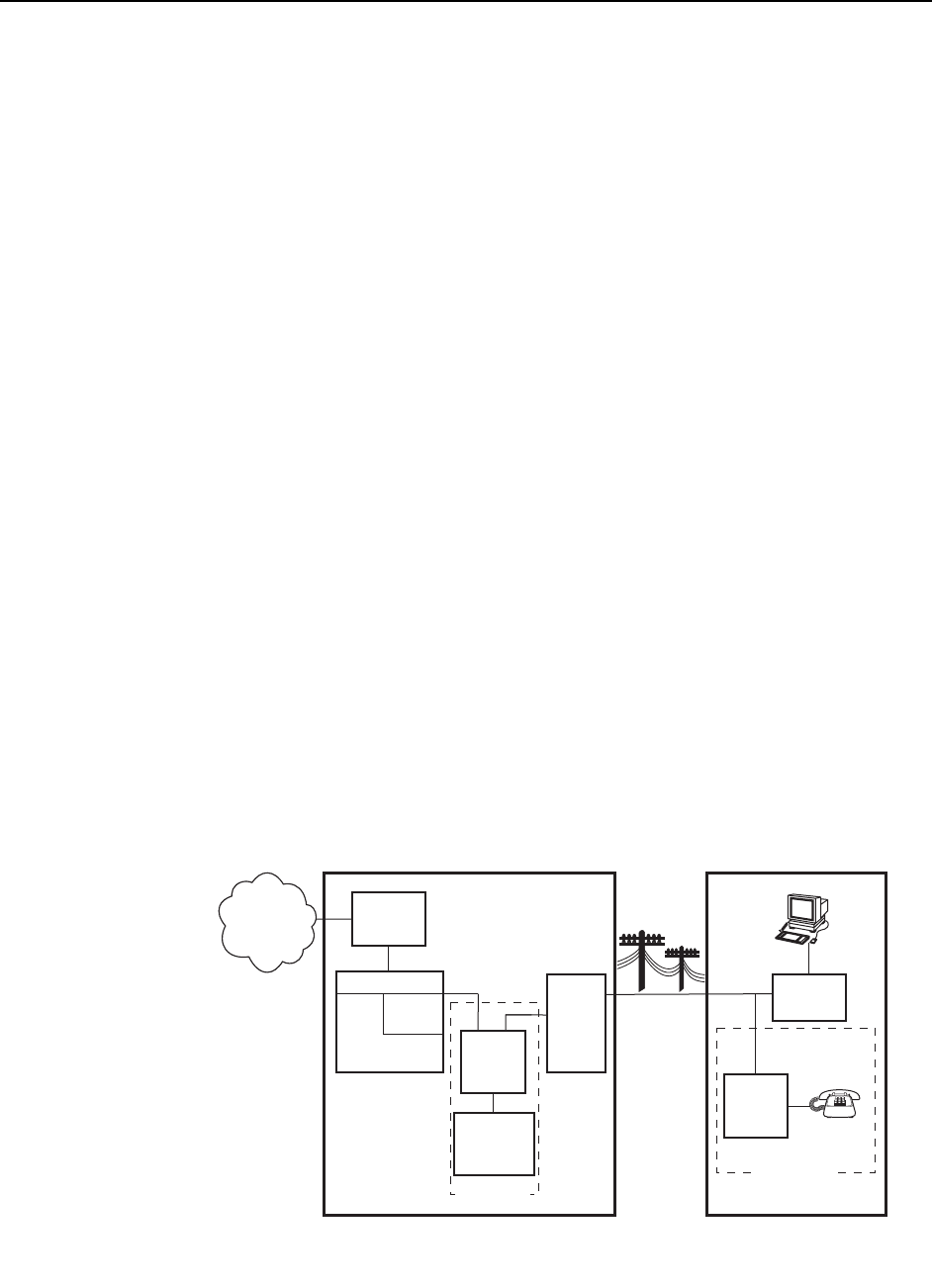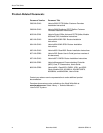
1. Introduction to Hotwire DSL Routers
1-2 November 2003 6300-A2-GB20-10
Typical DSL Router System
DSL is a local loop technology that uses standard twisted-pair copper wire to
support high-speed access over a single pair of twisted copper wires. DSL
applications are point-to-point, requiring DSL devices at central and end-user
sites.
Hotwire DSL routers interoperate with the following types of Hotwire DSL line
cards, at the DSLAM (Digital Subscriber Line Access Multiplexer) or GranDSLAM
chassis, to deliver applications at high speeds, supporting packet services over a
DSL link:
Hotwire 8303 or 8304 IDSL Cards interoperate with two Hotwire IDSL Routers:
— Hotwire 6301 IDSL Router with one Ethernet port
— Hotwire 6302 IDSL Router with a 4-port Ethernet hub
Hotwire 8343 or 8344 SDSL Cards interoperate with two Hotwire Symmetric
DSL Routers:
— Hotwire 6341 SDSL Router with one Ethernet port
— Hotwire 6342 SDSL Router with a 4-port Ethernet hub
Hotwire 8312 or 8314 ReachDSL Cards interoperate with the Hotwire 6351
ReachDSL Router with one Ethernet port
Hotwire 8510, 8373, and 8374 RADSL Cards interoperate with the Hotwire
6371 RADSL Router with one Ethernet port
The following illustration shows a typical Hotwire system with a Hotwire DSL
Router. All Hotwire DSL routers transport data. The Hotwire 6371 RADSL Router
can transport data and POTS simultaneously.
Legend: DSL – Digital Subscriber Line IPC – Interworking Packet Concentrator
MDF – Main Distribution Frame POTS – Plain Old Telephone Service
SN – Service Node
GranDSLAM
Central Office (CO)
01-16968
Customer Premises (CP)
ATM
SN
CP
POTS
Splitter
CO
POTS
Splitter
MDF
POTS/DSL
Hotwire
IPC
Voice
Interface
Data
Interface
POTS
Network
Service
Provider
Optional
Optional
Switched
Network
DSL
CARD
SCM


















